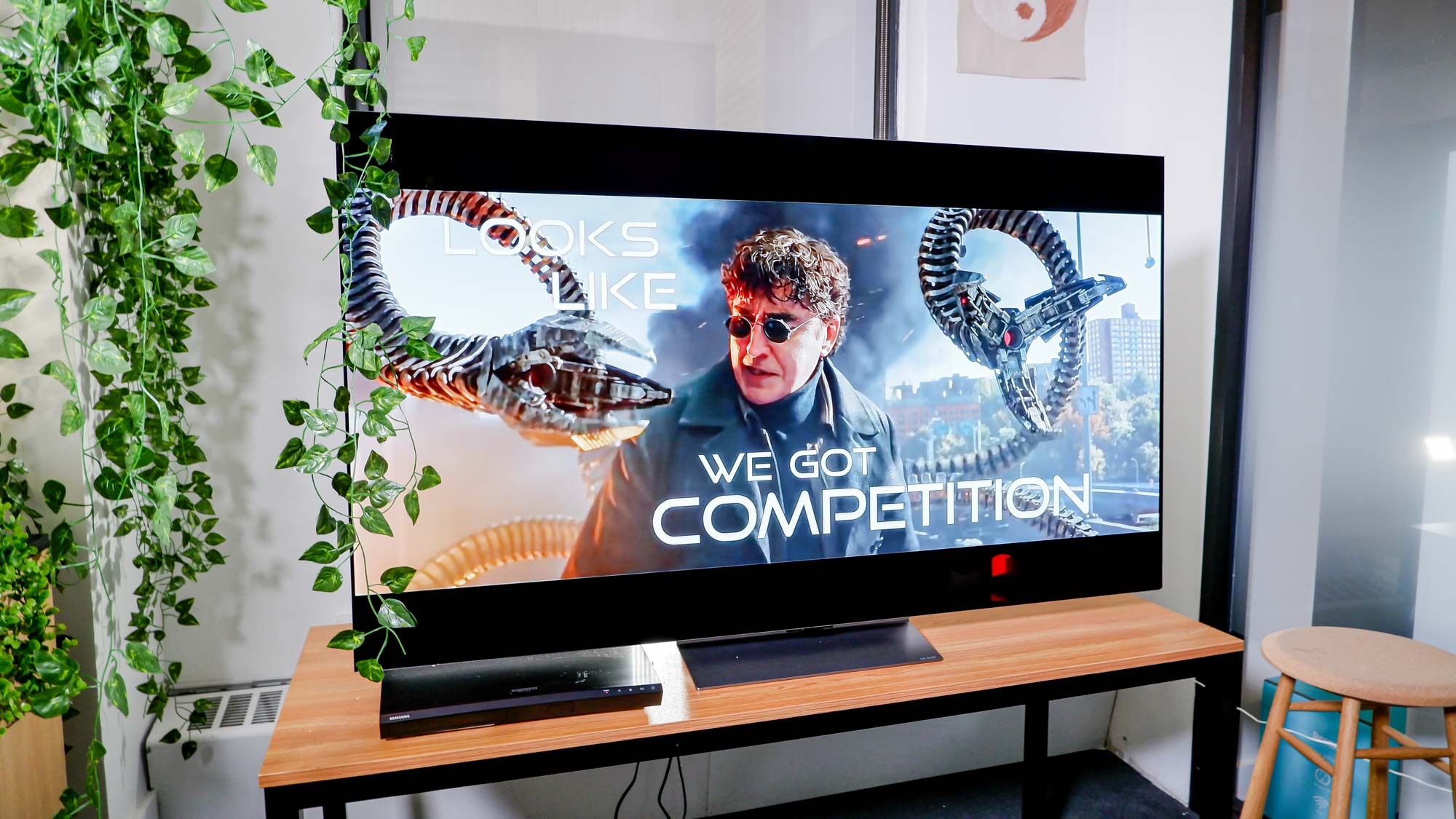We just tested LG's G2 OLED evo TV — and it's amazing
Based on our test results, the LG OLED evo is shaping up to be the ultimate QD-OLED rival

It’s not uncommon for TV makers like Samsung, LG and Sony to claim that their best TVs this year are brighter than last year’s, but LG really raised the bar for itself with the claim that its LG G2 OLED was 30% brighter than last year’s LG G1 OLED.
This year's Gallery Series OLED TV, if you can remember, was billed as the brightest yet thanks to its use of LG’s new OLED evo panels.
But as it turns out, LG didn't give itself enough credit. According to the data we collected, this year’s LG G2 OLED is actually 40% brighter than last year’s G1 — and that’s a number that could rise even higher with LG’s 2023 OLED TVs.
The brightest LG OLED yet (according to our numbers)
The LG G2 OLED TV reached a max brightness of 590.54 nits when set to Vivid mode in a 10% window. Compared to the G1 OLED’s max brightness of 412.05 nits in the same test last year, you’re looking at an upgrade of around 40%.
We’ve only ever reviewed one brighter OLED TV, the Sony Bravia XR A80J OLED TV, which hit 713.65 nits. Still, reaching nearly 600 nits, the G2 OLED secured it’s spot as one of the brightest and best LG TVs, as well as one of the best OLED TVs ever made.
Why is that so much lower than LED-LCD TVs? Well, with millions of self-emissive pixels, OLED TV panels can only get so bright without sacrificing color accuracy or color volume. OLED TVs are also susceptible to the burn-in effect, where static logos (for example, of a news channel) may become permanently singed into the screen.
LG addressed burn-in concerns with a new heat dissipation technology that lets the picture get much brighter without damaging the panel in the brightest parts of a given picture. Only time can tell whether the heat dissipation system works effectively, but from what we’ve seen, the brightness increase is a revelation.
Sign up to get the BEST of Tom's Guide direct to your inbox.
Get instant access to breaking news, the hottest reviews, great deals and helpful tips.
LG OLED evo vs. QD-OLED: Which will win?
We need to test the two QD-OLED TVs this year — the Samsung S95B OLED TV and Sony A95K QD-OLED TV — before determining whether OLED evo keeps up with or even beats those OLED panels with added quantum dot layers. Quantum dots benefit brightness without limiting color volume, while the pixel-level control of OLED still allows for true blacks and complexities in high-contrast scenes.
It’ll be fascinating to see how OLED evo and QD-OLED ultimately stack up. For what it’s worth, the LG G2 OLED TV earned high marks across the board. It earned a Delta-E accuracy score of 1.30. Any result of 2.0 or less is good, with lower scores being more accurate. The LG G2 also provides an impressively wide color gamut, producing 131.75% of the Rec 709 color space, surpassing the basic color standard by a significant margin.
QD-OLED will have to offer at least those scores if it wants to impress as much as the LG G2 OLED TV with OLED evo did.
Kate Kozuch is the managing editor of social and video at Tom’s Guide. She writes about smartwatches, TVs, audio devices, and some cooking appliances, too. Kate appears on Fox News to talk tech trends and runs the Tom's Guide TikTok account, which you should be following if you don't already. When she’s not filming tech videos, you can find her taking up a new sport, mastering the NYT Crossword or channeling her inner celebrity chef.
-
Ryrynz Why give percentages above 100% for color volume? Doesn't every half decent TV on the market provide full rec. 709 coverage? You should be stating rec. 2020 percentages instead that's far more meaningful.Reply

